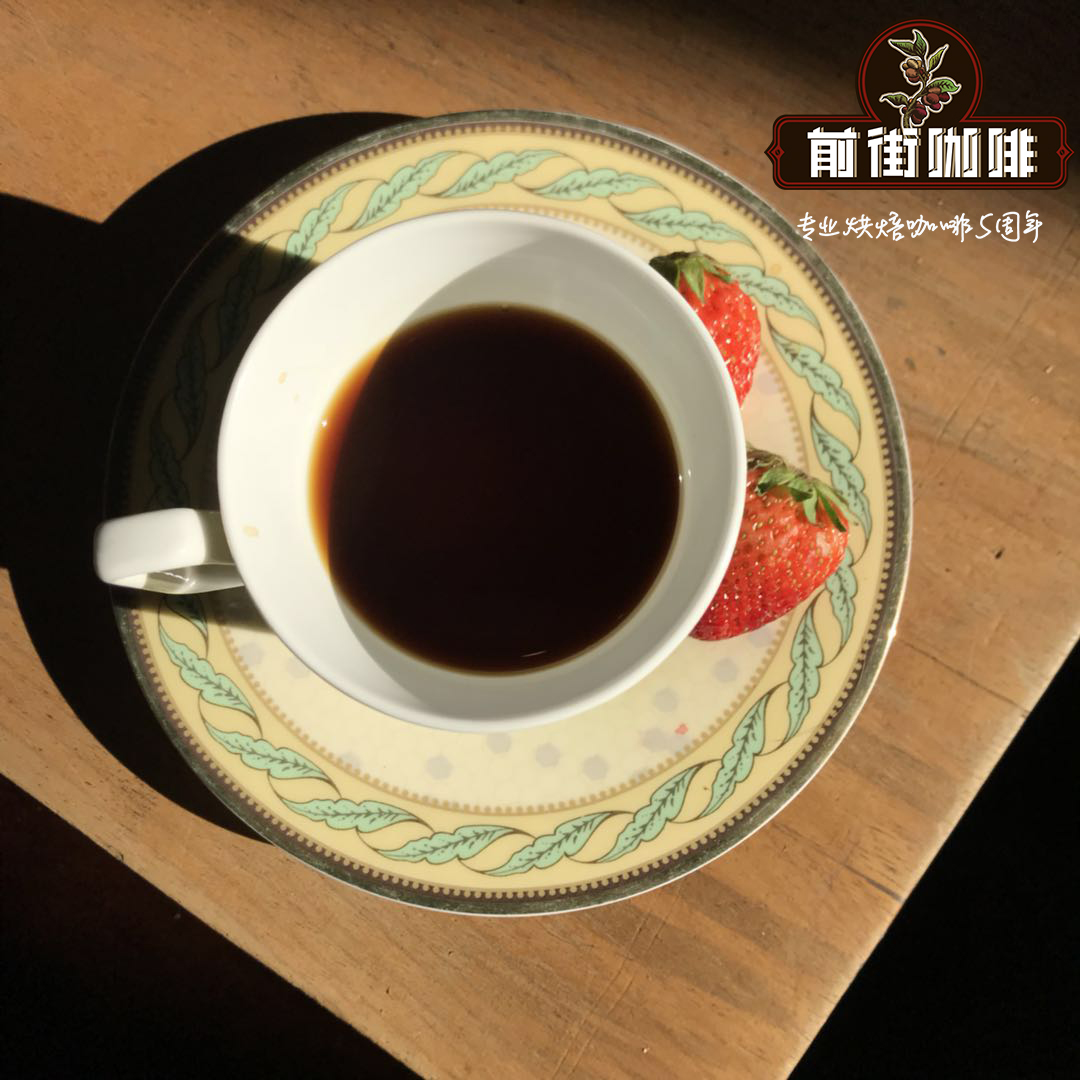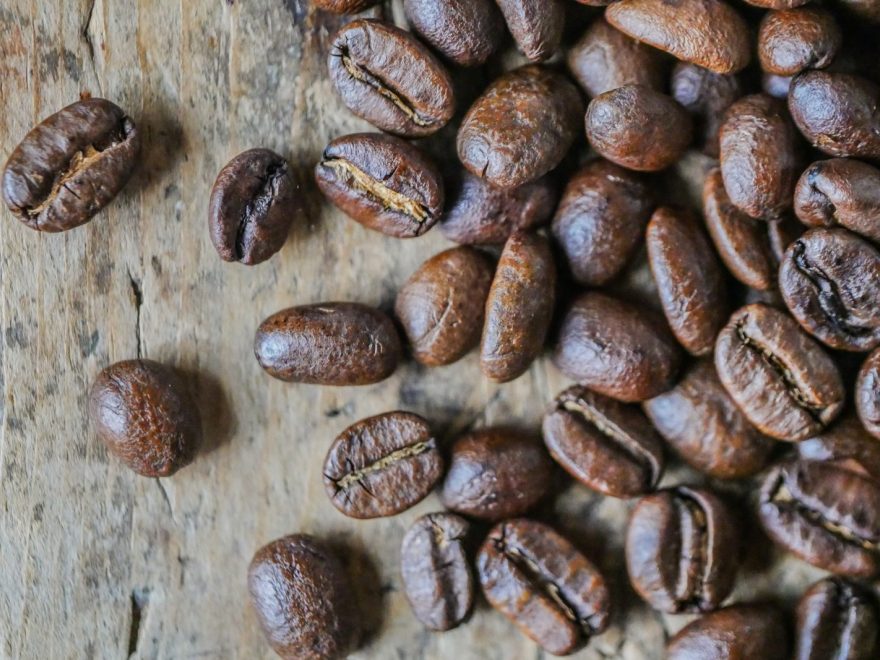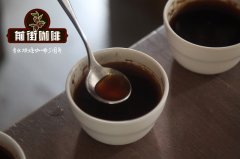Advantages of Arabica coffee beans Arabica coffee low caffeine, fruit, flowers, nut milk

Professional coffee knowledge exchange more coffee bean information please follow the coffee workshop (Wechat official account cafe_style)
Arabica Arabica
All the world's high-quality coffee comes from Arabica, accounting for about 70% of the world's coffee production. It is rich in flavor, high-quality acidity and flower fragrance, but the planting conditions are harsh, need to be planted in high-altitude areas, the growth is relatively slow, and very easy to be infected with diseases and insect pests.
Generally speaking, people are more receptive to the flavor of Arabica beans because Arabica is rich in aroma, and it is also easy to be affected by different elevations, soils, climatic conditions, and other factors that affect the growth and flavor of Arabica beans. Therefore, although they are all called Arabica, different places of origin will have a very different flavor!
In contrast, Robusta has more personality and is not easy to change its flavor by external factors, so there is little difference in flavor among Robusta in different producing areas. In addition, some coffee fans prefer sour coffee, while others prefer bitter coffee. In this part, Arabica beans are usually highly sour, while Robusta has a strong bitter taste.
Arabica produces less caffeine because it grows at a higher altitude and generally has fewer pests.
You must remember the Arabica coffee bean species
(the coffee beans described below belong to the Arabica category and will be marked on the packaging of the coffee beans you buy.)
01 iron pickup Typica
It has been said that "tasty and noble coffee is a tin pickup", although this is an exaggeration, but the world-famous king of coffee for decades, the Blue Mountains of Jamaica, is right.
Iron pickup is one of the oldest varieties of coffee, growing at higher elevations. Over the centuries, many other varieties have been derived, including bourbon, Java, elephant beans and so on. The yield of iron pickup is small and is easily affected by leaf rust. If the delicate tin card is planted properly, it has high sweetness, pure taste and pleasant acidity.
02 bourbon Bourbon
Bourbon originates from the natural variation of the iron pickup, which produces more than the iron pickup. It is another ancient coffee variety in addition to the iron pickup. It has high quality and medium yield. similar to its father's tin card, bourbon is weak in resistance to leaf rust and is a favorite food for coffee moths because of its high sweetness. It has the highest planting rate in Brazil and is also distributed in Burundi and Rwanda. Bourbon fruit is short, round, with high pulp and seed density, and usually tastes high sweetness and bright acidity. Bourbon is divided into yellow bourbon and red bourbon, and pink bourbon varieties can also be bought on the market in recent years.
03 Ethiopian native species Heirloom
"aromas of roses, fresh strawberries, and passion fruit, pineapple and white wine."
It is used to describe the "Sakuran" who caught fire this summer. However, "Huakui" is not the name of a bean seed, its real variety is Ethiopian native species, if you see "Heirloom" on the packaging of coffee beans, it refers to Ethiopian native species. Ethiopia's Kafa forest is the gene bank of coffee and is the rich treasure of the boutique coffee world. Most of the beans in Ethiopia come from the Kafa forest. Ethiopian native bean elephants are not as good-looking as bourbon, are smaller and vary in size and particles, but the flower and fruit aromas of coffee are always amazing.
04 new world Mundo Novo
New world is a natural hybrid of red bourbon and Sumatra iron pickup, especially in places such as Brazil, accounting for 40% of the total amount of Arabica coffee grown in Brazil. New World belongs to the variety with higher yield, which is 30% higher than ordinary bourbon and 40% higher than ordinary bourbon, and has strong disease resistance. Because of the high yield per plant, the sweetness is usually low.
05 Kaddura Caturra
A single-gene variant of bourbon was found in Brazil in the 1950s. Production capacity and disease resistance are better than bourbon, and Kaddura is the most common in Central America. However, the trees are short and easy to harvest, but unfortunately, like bourbon, there are periodic problems of production capacity fluctuations every two years. Flavor and bourbon beans are comparable or slightly worse, more important is super adaptability, do not need shade trees, direct exposure to the sun can also be full of vitality, commonly known as exposed coffee (Sun Coffee). At the same time, Kaddura can adapt to high-density planting, but more fertilizer must be applied to increase the cost. In academic circles, some people call Kaddura the bourbon of dense and exposed version, which can be said to hit the nail on the head.
06 Kaduai Catuai
A hybrid from New World Mundo Novo and Kaddura Caturra.
The plant is relatively short, and the angle between the lateral branch and the main branch is small. In addition to higher yield, coffee cherries will not easily fall after ripening, strong resistance to wind and rain, is also another prominent advantage of this species. Loved by windy and rainy producing areas.
Catuai can adapt well at various elevations, and when planted above 800m, it will drink better. Fruit color is common red and yellow, also known as red red catuai and yellow yellow catuai respectively.
Catuai is widely grown in the vast areas of Central and South America, including Brazil. Kaduai also has the difference between red fruit and yellow fruit, and red fruit wins more often than yellow fruit. New World, bourbon, Kaddura and Kaduai are ranked as the four main coffee varieties in Brazil.
07 Rose Summer Gesha/Geisha
"I finally saw the face of God in the coffee cup!" ?
Don Holly, a famous American coffee appraiser, exclaimed after his first taste of the citrus, honey and floral flavor of Rose Summer.
The beautiful English name and Chinese translation of the rosy summer species, which beat the old coffee brands such as the Blue Mountains of Jamaica and Kona of Hawaii, is actually one of the original species of Ethiopia. It was first found in Ethiopia and came to Panama. Perhaps it was nourished by the local climate, soil and water. In the cup test, the jadeite manor family found that one batch was brighter and richer than the other batches, with floral flavor. After searching in the LOT of this batch, I found a rosy summer coffee tree that looked different from the nearby coffee trees at that time. The coffee beans on this tree were picked and processed separately, and won the first place in the competition. In recent years, the sun rose summer at this year's Best of Panama boutique coffee bean auction has been in the limelight, earning a whopping $601 a pound.
8 SL28/ SL34
Although there may be no historical or beautiful names like other coffee beans, Bourbon is the SL28 and SL34 created in the laboratory by British and French experiments. these numbers represent Kenyan ace beans that make sour coffee gluttons can't help but pull out their wallets. Kenya's unique phosphate-rich soil is rumored to be behind the bright raspberry aroma of Kenyan coffee.
9 Pacamara Pacamara
"the flavor is full, rich and varied, with acidity and rich sweetness, with apricot, vanilla, tropical fruit, chocolate, sweet spices and other changes." -- the aroma and flavor of Pacamara
Maragogype (a mutant of typica, found in the Malagoripi region of Bahia, Brazil, which produces the world's largest coffee beans, sometimes called "elephahtbean" (not confused with the general deformed bean "elephant ear"). It is currently grown in Cuba Cuba, Colombia Colombia, Guatemala Guatemala, Mexico Mexico and Nicaragua Nicaragua. Due to its mild smell and attractive appearance become the pursuit of coffee beans, due to low production and high production costs, so the market is often in short supply.)
End
Important Notice :
前街咖啡 FrontStreet Coffee has moved to new addredd:
FrontStreet Coffee Address: 315,Donghua East Road,GuangZhou
Tel:020 38364473
- Prev

How to choose coffee beans? Menu beans or mixed beans? The difference between single bean and comprehensive bean
Professional coffee knowledge exchange more information about coffee beans Please follow the coffee workshop (Wechat official account cafe_style) is it better to mix beans with coffee, or is it better to serve beans alone? Generally speaking, coffee has a variety of charming charm, delicious and their own preferences have something to do with, so it is important to understand the characteristics of coffee. Individual coffee can best show the unique personality of coffee beans, due to the national producing areas.
- Next

Description of the flavor and taste characteristics of the common coffee beans in the world
Professional coffee knowledge exchange more coffee bean information please follow the coffee workshop (Wechat official account cafe_style) Rose Summer Coffee is the most expensive coffee, topping the 3-time cup test origin: Ethiopia, Panama, Colombia taste and characteristics: raw bean blue-green, ripe bean with some wrinkles, floral aroma, tropical fruit, strong sweetness. Jamaica Blue Mountain Coffee is the second most expensive in the world.
Related
- Guji coffee producing area of Guji, Ethiopia: Humbela, Shakiso, Wulaga
- What is the most expensive variety of Qiloso in BOP multi-variety group?
- How to store the coffee beans bought home?
- Why are Yemeni coffee beans so rare now?
- Ethiopian Sidamo all Red Fruit Sun Sun Santa Vini Coffee beans
- SOE is mostly sour? What does it mean? Is it a single bean? what's the difference between it and Italian blending?
- Is Italian coffee beans suitable for making hand-brewed coffee?
- How to choose coffee beans when making cold coffee? What kind of coffee beans are suitable for making cold coffee?
- Just entered the pit to make coffee, what kind of coffee beans should be chosen?
- Can only Japan buy real Blue Mountain Coffee? What are authentic Jamaican Blue Mountain coffee beans?

